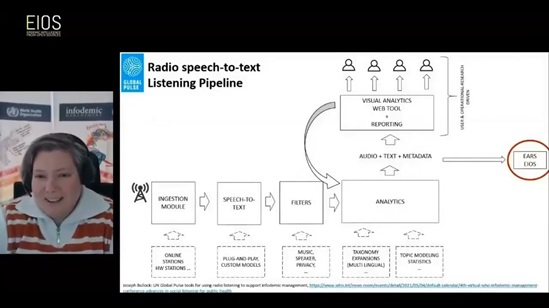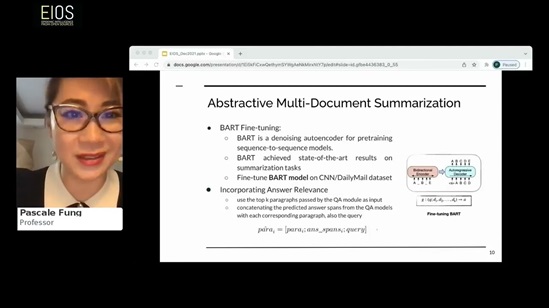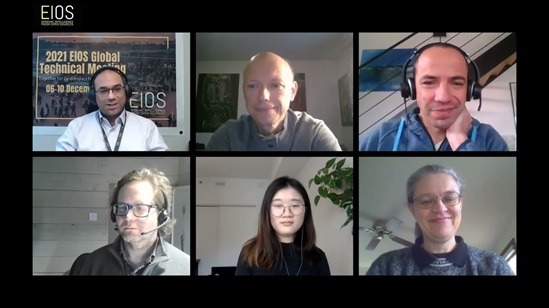
Insights from Data
Wednesday, 8 December 2022
An infodemic is an overflow of information of varying quality that surges across digital and physical environments during a health emergency. It leads to confusion, risk-taking and behaviours that can harm health and lead to erosion of trust in health authorities and public health responses. It also greatly impacts the work of public health intelligence (PHI) experts as the legendary “haystack” containing relevant signals for early detection of health threats becomes infinitely bigger. The infodemic accompanying the COVID-19 pandemic is just the latest and maybe most visible manifestation of this trend.
To set the scene of Day 3, the introductory session Tackling the Infodemic aims to establish a common ground on what constitutes a so-called infodemic and its tangible impacts on the PHI function. In this session, Oliver Morgan, Director of the Health Emergency Information and Risk Assessment Department at WHO, welcomes the participants and Tina Purnat, a WHO Technical Officer, explores how proper infodemic management can support the management of epidemics and of epidemic risk more specifically.
On both tracks, conference host Philip AbdelMalik, who leads the EIOS Core Team at WHO, then goes on to discuss approaches helping to navigate and analyze the overabundance of structured and unstructured information for informed decision-making with various experts and EIOS collaborators. In the Navigating the Infodemic-sessions, they highlight and discuss related research projects, concepts and solutions aimed at supporting PHI practitioners to navigate the information overload, discover relevant information and make sense of it.
Session Recordings
Tackling the Infodemic
The “Tackling the Infodemic”- session serves as an introduction to the day’s topic and aims to establish a common ground on what constitutes a so-called infodemic. In his welcome address, Oliver Morgan talks about some of the infodemic’s tangible impacts on the PHI function and Tina Purnat explores how proper infodemic management can support the management of epidemics and epidemic risk.
Insights from Data: Navigating the Infodemic 1
In the “Navigating the Infodemic”- sessions, Philip AbdelMalik discusses different solutions and research projects designed to help navigate and analyze the overabundance of structured and unstructured information with two panels of experts and EIOS collaborators. On Track 1 he welcomes panelists from the Hong Kong University of Science and Technology, the Polish Academy of Sciences, Adappt, and WHO.
Chapters
0:00 Introduction
7:05 Fung/HKUST: Improving public health surveillance using natural language processing
24:33 Piskorski/Polish Academy of Sciences: Fine-grained classification of events related to infectious diseases
39:35 Anthony/Adappt: Anomaly detection and relevant solutions for public health intelligence
55:23 Czerniak/WHO: Advancing social listening for infodemic preparedness and response (EARS)
1:10:34 Panel
Insights from Data: Navigating the Infodemic 2
In the “Navigating the Infodemic”- sessions, Philip AbdelMalik discusses different solutions and research projects designed to help navigate and analyze the overabundance of structured and unstructured information with two panels of experts and EIOS collaborators. On Track 2 he welcomes panelists from the Joint Research Centre (JRC) of the European Commission, Amazon Web Services (AWS), as well as from McGill and Pennsylvania State University.
7:47 Linge and Jacquet/JRC: Trend analysis of COVID-19 disinformation narratives
20:15 Howard/AWS: Using cloud to help navigate the infodemic
33:35 Shen/McGill: ‘Connecting the dots’ to improve the reliability of alerts
43:09 Shea/Pennsylvania State University: Multiple models for outbreak decision support: what matters most for decision-making?
1:02:15 Panel discussion
Webinar 3: EIOS Use Case presentations
Today, a large part of the global EIOS community is reflected in over 50 different communities on the EIOS system. While they all pursue the common goal of saving lives and minimizing the impact of health threats by finding and responding to them as early as possible, they all use the EIOS system in different ways based on their particular surveillance objectives and priorities.
This webinar showcases examples of how three different communities, including two Member States and one WHO regional office, use the EIOS system for event-based surveillance (EBS) in their specific contexts. Presenters from Nigeria, the first Member State to join EIOS in 2019, and Uganda, which joined the initiative in early 2020, share some of their experience with integrating the EIOS system into their national surveillance activities. A representative from WHO EURO highlights some of the challenges their teams faced while monitoring SARS-CoV-2 variants and the solutions that helped them overcome these.
This interactive session allows members of different communities to directly engage with each other, share common challenges and learn from each other’s experiences. It aims to facilitate peer-to-peer exchange with members from existing communities and to inspire future communities by demonstrating how the EIOS system has been successfully implemented in varying real-life contexts.
This webinar is moderated by Julie Fontaine, Epidemiologist and EIOS Epidemiology Coordinator at the World Health Organization.




